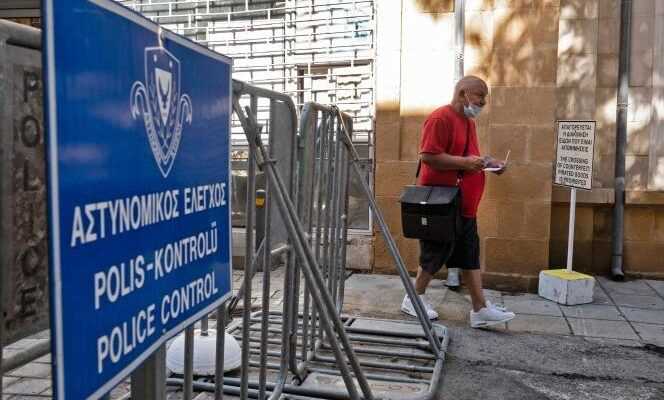On both sides, the population has been waiting for this for over a year. The crossing points between the northern and southern parts of Cyprus reopened on Friday June 4th. The Mediterranean island has been divided since its northern third was invaded in 1974 by Turkey, in reaction to a coup by Greek Cypriot nationalists who wanted to reattach it to Greece.
The nine crossings across the island reopened without fanfare in the morning, after several weeks of talks involving Greek Cypriots, Turkish Cypriots and the United Nations (UN), which controls the buffer zone.
“It’s a good step for the two communities to come closer after a year and a half without being able to see each other”said Pentaliotis Panayiotis, 35, one of the first Greek Cypriots to cross the Ledra Street crossing point, in the center of Nicosia, the last divided capital in the world, to the north of the island. “Our objective is not only to open the crossing points, but to have a comprehensive solution that does not include a border within our country”, he stressed, however.
Hopes for reunification stalled
Negotiations on a reunification of the island have stalled since 2017 and a meeting under the auspices of the UN in Geneva at the end of April failed to revive them. The decision to reopen the crossing points was taken following an agreement to harmonize sanitary measures between the two parties. It was validated by the Greek Cypriot leader, Nicos Anastasiades, and his Turkish Cypriot counterpart, Ersin Tatar, the UN announced in the week.
A joint technical committee will meet every two weeks to assess the health situation using a color code. Green indicates that there are no restrictions on movement, orange indicates that a negative PCR or antigen test must be presented within seven days and red indicates that crossings are closed to the general public . Friday, orange was in effect.
“The measures will be applied to all categories of people and to third country nationals”, recalled the UN mission in a statement, believing that “Free movement will facilitate contacts between people, build trust and have a positive socio-economic impact”.
Thousands of daily passages in normal times
Normally, several thousand people pass through the crossing points daily to go to work, study or seek treatment. “I couldn’t see my boyfriend anymore and I had visa problems (…) Now that it’s open, I’m so happy ”Rozhan Amiri, a 19-year-old Iranian student, told Agence France-Presse.
The Republic of Cyprus, which exercises its authority over the southern part of the island, has recorded 72,626 cases of Covid-19 infection, including 362 deaths. It had closed four crossing points at the end of February 2020 for the first time since their opening, in 2003. The other five were closed on March 10 after the first case recorded in the Turkish Republic of Northern Cyprus (TRNC, self-proclaimed and only recognized by Ankara), where 7,375 cases were recorded, including 33 deaths.
Certain traffic restrictions had been gradually lifted, in particular for Turkish Cypriots studying in the southern part of the island.
